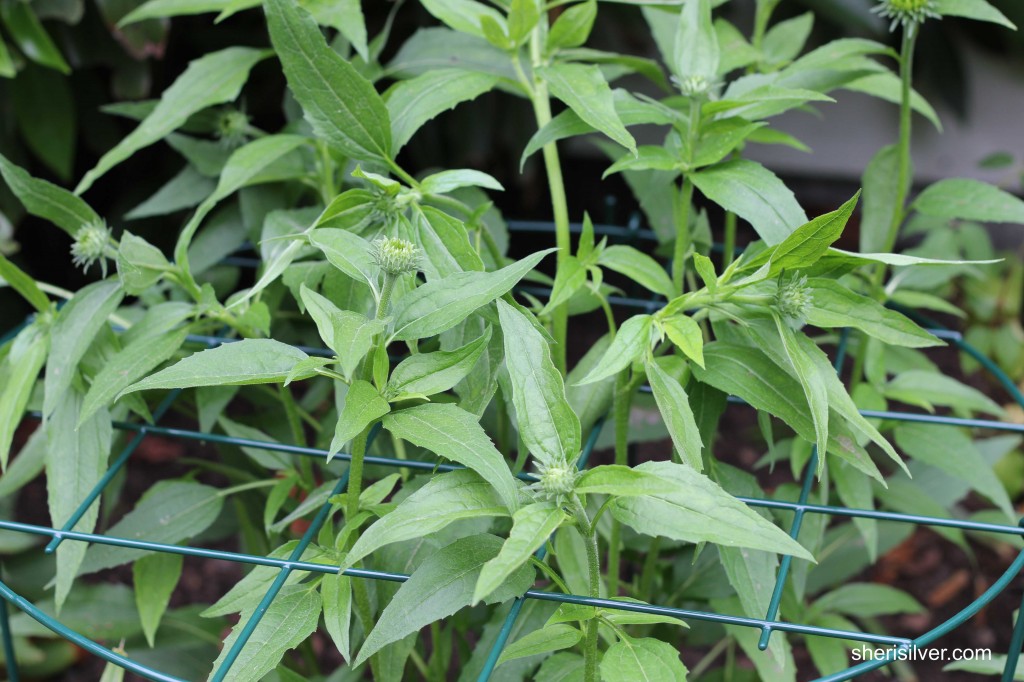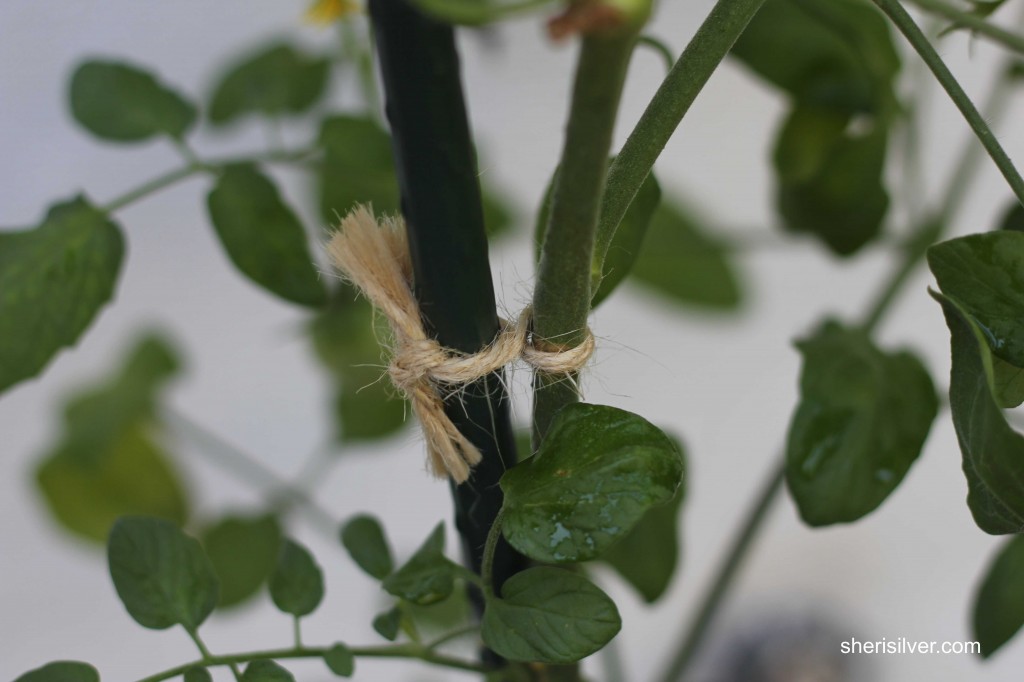These –
are the bane of my existence (gardening-wise, that is). Four years ago I was diagnosed with basal joint arthritis in my left hand and have developed it in my right hand since then. So while I can still lift 50 lb. bags of mulch without a problem, it is beyond painful to tie a tiny piece of yarn around a stake. Now imagine trying to tie dozens of pieces of yarn around dozens of stakes and – well, you get the picture. My condition has forced me to completely re-think how I maintain my gardens (and those of my clients), as staking is pretty much out of the question.
Which has not necessarily been such a bad thing. Staking, to me, has never been an ideal solution in my perennial beds. No matter how carefully or “artfully” I try, it always winds up looking – well, like a bunch of stakes. Never mind the amount of work and effort involved – the end result is almost always unattractive and takes away from the overall look of the garden. So this season I decided to eliminate – or at least drastically reduce – staking in the garden.
So how does one get around having to stake?
Know your site. Specifically, both the kind of soil you have and the amount of light your garden receives. This is obviously important for many reasons, but particularly if you’re looking to reduce staking. For example, a sun-loving perennial planted in partial shade will tend to lean and reach towards the light. As a result, you will most likely have to stake the plant to prevent it from flopping over. Best to eliminate that plant from your garden or plant it in a sunnier spot (this is a great way to utilize containers – as there’s probably a sunny spot somewhere on your property, stick that plant in a pot and place it there). Same goes for soil conditions. A plant that likes it dry will never be happy in a rich, moist soil. I learned this the hard way with my Globe thistle. Globe thistle (Echinops) does not do well in rich soil. My garden is thoroughly irrigated and as a result, the plant always looks spindly and leggy. I wind up having to individually stake each stem to keep the plants from falling over. This year I took them out entirely and transplanted them to a more arid spot.
Cut back – early and often. I’ve always cut back late-bloomers such as Goldenrod (Solidago) and Joe-pye weed (Eupatorium), to create shorter, bushier plants that produce more profuse blooms. But I’ve come to realize that this same technique can be applied to almost any perennial. As I mentioned in my last post about my garden, the deer actually taught me this lesson. They “pruned” a clump of Echinacea that I didn’t get to spray in time. I’ve since noticed that these plants, while shorter than the others, have sturdier stems and do not require any staking. Voila! Next season I will make a note to cut them all back in late May/early June. I plan to try this with my ornamental grasses as well as my Nepeta, to see what results.
Get shorty (plants). You can now find many cultivars of plants that are dwarf, or compact varieties. This is an excellent option for creating a garden with plants that will keep their size in check, without any cutting back or staking required. Some examples are “Little Joe” Joe-pye weed, “Little Spire” Russian Sage, and “Kob0ld” Liatris.
Okay, stake. If you have to stake, here are some tips:
Get grow-through grids. Have I gone on enough about these? I love them! I’ve always used them for my Peonies, but this year installed them in my large clumps of Echinacea. As with the Peonies, getting them into the ground early on is crucial. You want the stems to grow through the grid openings, and for the grids themselves to “disappear” as the plants mature throughout the season. This worked beautifully and I plan to use them next year in my ornamental grasses, which are a tangled, floppy mess by mid-summer.
Twist the twine. The proper way to stake is to loop the twine around the stem and twist it before tying it to the stake. This keeps the stem from rubbing against the stake.
Speaking of twine – here’s a cute trick I picked up years ago to keep my twine handy and untangled: pop it in a terra cotta or plastic pot and thread the loose end through the drainage hole.
Go “au naturel”. Using fallen twigs and branches from around your yard lend a more natural look than bamboo stakes. When placed around your emerging perennials, the foliage gradually grows around the branches, so that they blend in with the rest of the garden. Here’s a link that shows a great example of this technique (thank you Martha…).
Do any of you loathe staking as much as I do? How do you get around this task? Any great tricks or tips you’ve acquired? Please share here!

Hi! I'm Sheri!
Welcome to my little corner of the web where you’ll find easy, delicious recipes, the best kitchen hacks and simple tips for turning your home into a clean haven that is free of toxins. So glad you’re here!









